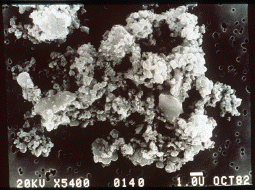This is a picture of a Brownlee particle, which may be what a comet is made of.
Click on image for full size
JPL
Brownlee Particles
This example of Interstellar Dust is a perfect example of the kind of rocky material comet may be made of. The grains themselves seem to be made of smaller grains. There are many holes, or pores. In a proper comet, these holes would be filled with ice.
This example of Interstellar Dust is called a Brownlee Particle after D. E. Brownlee. Dr. Brownlee first detected these particles in the Earth's atmosphere and speculated that they may be the left over remnants of comets which passed through the Earth's orbit. He postulated this theory because of the unusual construction of these rocky particles.
You might also be interested in:
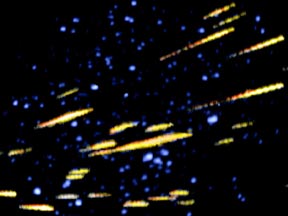
A meteor shower is an astronomical event during which many meteors can be seen in a short period of time. Most meteor showers have a peak activity period that lasts between several hours and a couple of
...more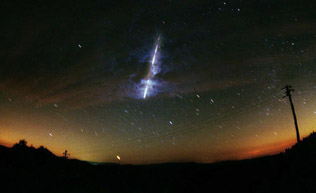
Meteors are streaks of light, usually lasting just a few seconds, which people occasionally see in the night sky. They are sometimes called "shooting stars" or "falling stars", though they are not stars
...more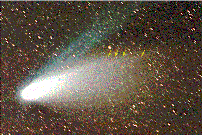
Hale-Bopp continues to offer surprises as astronomers study the comet. Using the Hubble Space Telescope and the International Ultraviolet Explorer, astronomers have found that there are distinctly different
...more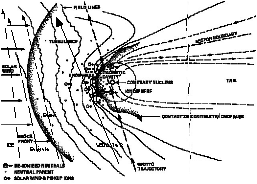
Six spacecraft flew by Halley's comet in 1986. There were two spacecraft launched from Japan, Suisei and Sakigake, and two from the Soviet Union, Vega 1 & 2. One spacecraft, ICE, from the United States
...more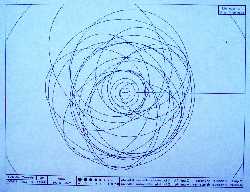
Comets are observed to go around the sun in a long period of time or a short period of time. Thus they are named "long-period" or "short-period" comets. One group of short-period comets, called the Jupiter
...more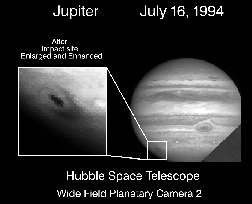
Scientists have learned a great deal from the crash of comet Shoemaker-Levy 9. Scientists traced the orbit of the comet backwards in time to guess its origin. This calculation, along with the discovery
...more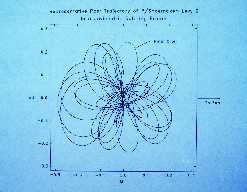
Mathematical theory suggests that comet Shoemaker-Levy 9 was likely a short-period comet which was captured into orbit around Jupiter in 1929 and began to execute the trajectory plotted in this diagram.
...more


